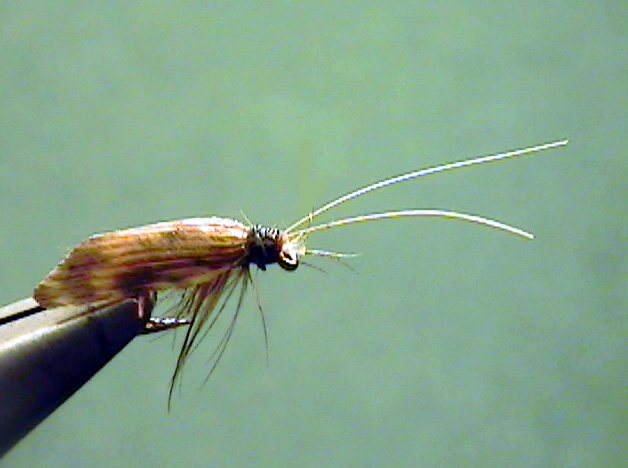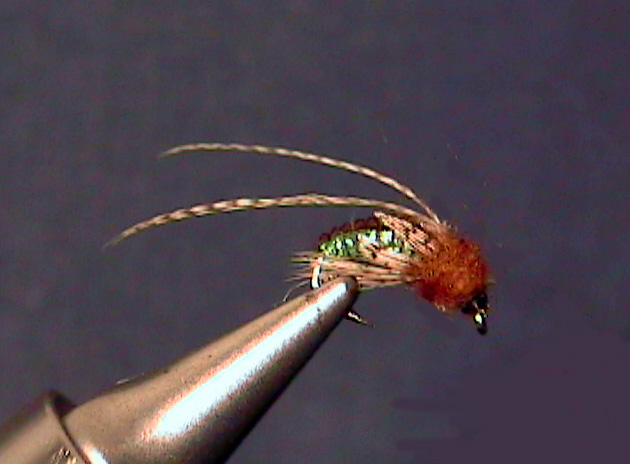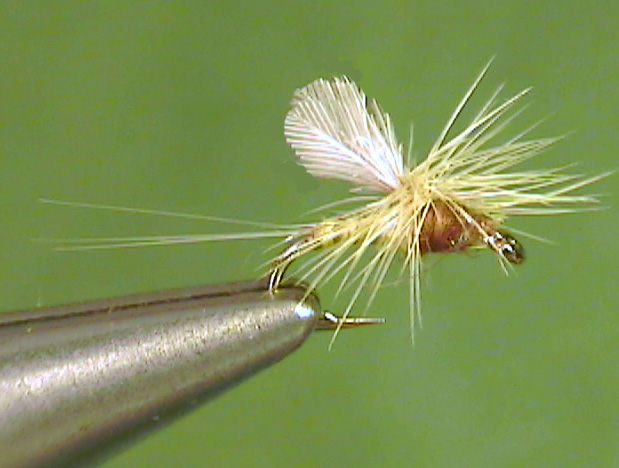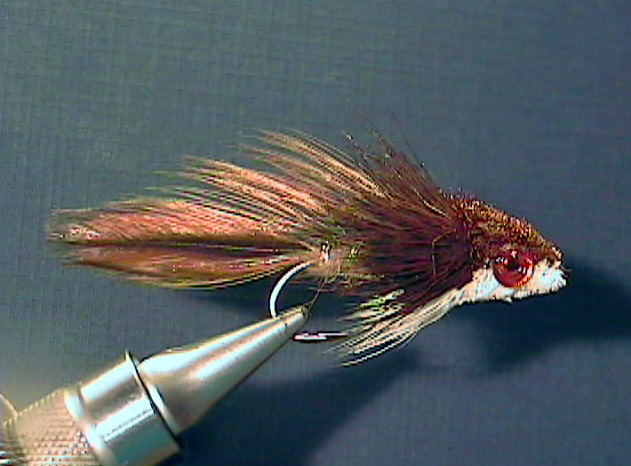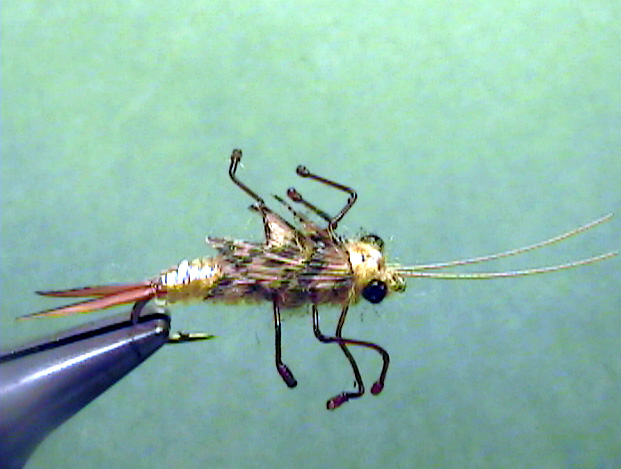
Nymph
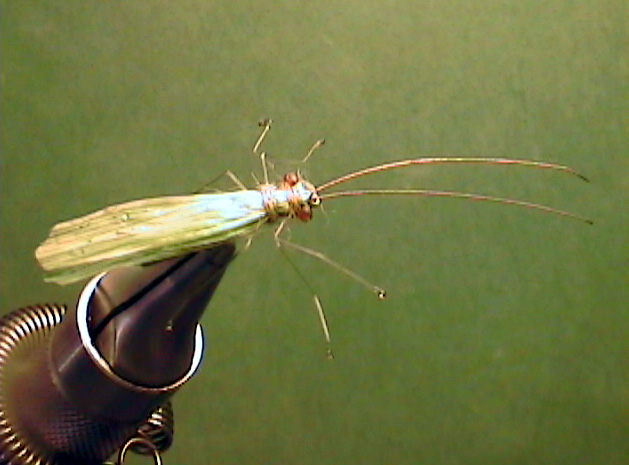
Adult Stonefly
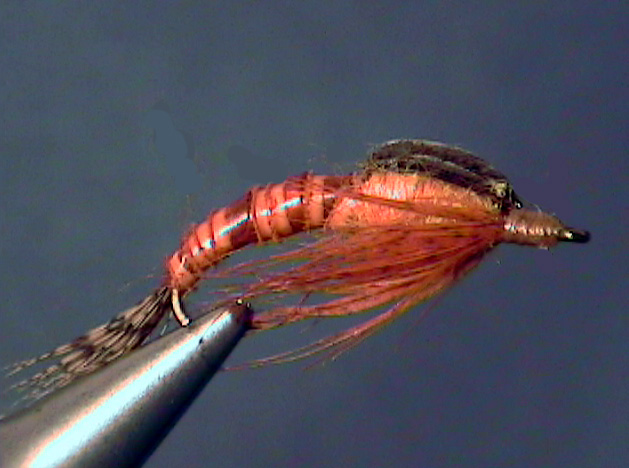
March Brown Nymph
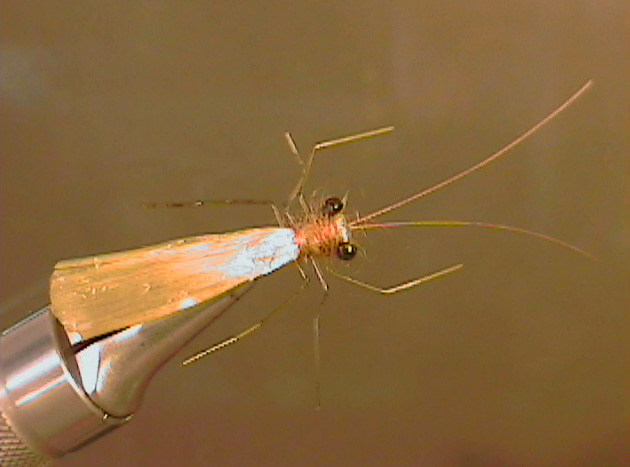
Sally
You should purchase and organize the flies you use fly fishing the streams of Great Smoky Mountains National Park, BEFORE you come to the Smokies. Although you can purchase thousand of different fly patterns at many places near the Smokies, doing so usually only leads to confusion, often receiving poor recommendations, and result in not having the best flies you could and should have.
Flies:
The trout are not fooled by your fly line, fly rod, fly reel, waders, or vest. They are fooled by and caught on a fly. Don’t let anyone kid you or fool you with stupid theories and beliefs. The fly is important. Each and every time a trout takes a fly, it is under the impression it is going to get a real morsel of food to eat. Trout don’t eat feathers, hair, metal, and foam. They eat various marine species of life, crustaceans, and insects. The more your fly looks and acts like something trout normally eat, the better your chances of fooling it. Notice I said “acts” like. It doesn’t make any difference how much the fly looks like the real thing if it doesn’t act like the real thing. That is why the “presentation” of the fly is as important as anything, including the fly. Here is how you go about determining what flies to use.
How to Choose the Flies to Bring:
Start by looking at a hatch chart. It will show you what the trout will be seeing and eating during the time you are fishing. When purchasing, or tying your flies, make allowances for deviations in the weather from what is normal. You want know until a day or two before the time you start fishing, if there has been major changes in the weather for the time of year you are fishing. From a weather standpoint, you should consider that it may be closer to the weather of a month before or a month after the time you plan on fishing. Include that time period into your consideration of what flies to have. For example, suppose you are fishing during the last week of April. Mark out the time slot ranging from the last week of March all the way to the last week of May on the hatch chart. Now lets look at what the chart shows.
Flies for fishing the last week of April (last week Mar through the last week May
Blue-winged Olives
Eastern Green Drakes (Abrams Creek Only)
Slate Drakes
Hendricksons
Quill Gordons
American March Browns
Light Cahill
Sulfurs
Blue Quills
Little Black Caddis
Short-horned Sedges
Cinnamon Caddis (Abrams Creek Only)
Little Sister Caddis (Abrams Creek Only)
Green Sedges
Giant Black Stoneflies
Yellow Sallys
Winter Stoneflies
Little Green Stoneflies
Midges
Crawfish
Minnows
Sculpin
That period of time shows a total of 22 items the trout may eat during that two month period (last week of March through the last week of May). I choose the time of year when the most insect activity is occurring. Most other times, there would be half that number or even less. If you want to cover every possibility, have flies for everything listed above but that is not really necessary. Lets look at the items in detail.
Blue-winged Olives are necessary because they will be hatching for sure during the time your will be fishing.
Winter Stoneflies are shown 3 weeks before you are fishing. Although it is possible for them to hatch, I wouldn’t worry about having flies for them because of all the other insects that will be hatching, so they are purely optional.
Little Black Caddis should be finished hatching, but you may want to have some flies for them just in case the weather has been unseasonably cold. The Short-horned Sedges are a must. So are the Green Sedges. The Giant Stoneflies are also a must. All three of these insects should be hatching at the time you would be fishing.
The Cinnamon Caddis, Little Sister Caddis and Eastern Green Drakes would only be important if you were fishing Abrams Creek.
The Blue Quills and Quill Gordons would most likely be gone but flies for them would be a good backup in case the weather had been unseasonably cold.
The Hendricksons would be a must. The Pale Evening Duns and Sulfurs could be hatching if the weather has been unseasonably warm. American March Browns would be a must.
The Yellow Sallys probably wouldn’t be hatching but if the weather had been unseasonably warm they may be hatching. I would want some imitations of them because when they do hatch, they are very important. Notice my paragraph below about a very important thing anglers often forget. The Light Cahills are a must. Midges, minnows, crawfish and Sculpin are always important.
Eleven items (The Bold Black Items) are shown to be important during the last week of April. The non-bold black items could be important if the weather isn’t normal for that time of year. Three items are for Abrams Creek only. That shortens the list of flies you would need depending on whether or not your fished Abrams Creek and just how cautious you wanted to be.
Now here comes the very important thing most anglers forget about when looking at a hatch chart. The chart isn’t just good for what is HATCHING. It is also good for what is ABOUT TO HATCH. So scan down the hatch chart and notice what is scheduled to be hatching a week or two after the week you will be fishing that is not listed as a Bold item. In this case only the Yellow Sallys fit that category. This is very significant because the nymphs and/or larvae of insects that are going to hatch will move to the area they hatch in and become very active and available for the trout to eat. Most any other time of the year you would find more than one insect that was about to hatch. Those are the insects that you WANT TO BE SURE TO IMITATE WITH A NYMPH OR LARVA.
Studying a hatch chart is how you go about determining which nymphs or larvae are most likely being eaten by trout. Most nymphs and larvae stay hidden or underneath rocks and are not very available for the trout to eat. Those about to hatch, or in the process of hatching, are very available for the trout to eat. This is the most overlooked element of fly-fishing for trout. You want to fish nymphs and larvae imitations of the insects that are most plentiful and available for trout to eat, whenever you are fishing. Also keep in mind that trout don’t just feed selectively on insects that have hatched about to fly away, they also feed selectively on the nymphs and larvae, even more often that the duns and adults.
So far, we have just decided which insects and other things to imitate. We not taken into consideration the various stages of life of the insects. If you are not familiar with stage of life, or what I mean by this, go study what I call Bugs 101. before proceeding. I would recommend your have flies available for each stage of life but if you don’t understand where and how to present the emerging stages and spinner/egg laying stages, I had rather see you just fish the nymphs and duns or adults. So you should at the very least have imitations of these two stages of life.
Flies for various stages of life:
The stoneflies have only two stages to concern yourself with – the nymphs and egg laying adults. The caddisflies that are net spinners or free living have three stages and the midges have three stages of life – the larva, pupa and adult. The case building caddisflies have only the larva and adult stages to be concerned with imitating. Trout will eat some of the cased caddis but I don’t think they are worth imitating. The mayflies have four stages of life to be concerned with. The nymph, emergers, duns and spinners. Trout will eat them in all four of these stages. The emerger is not really a stage but rather an intermediate stage. Trout eat them when they are emerging because that is when it is easiest for them to do so. We have two versions of emerger flies for most mayflies – a trailing shuck version and an emerger version. The emergers imitate the mayfly when it first starts to open its wing pads in the surface skim. The trailing shuck version imitates the newly hatched dun with the nymphal shuck still attached to it. You should become familiar with these stages of life and how to imitate them. You should be prepared with flies for each stage.
Generic and Attractor Flies:
Many anglers will advise you to fish generic patterns. Those are flies that represent a variety of different insects rather than a specific family or species. They want call them generics, rather they will call them by the flies name.
For example, a hare’s ear nymph represents a mayfly or stonefly nymph. It doesn’t look much like any particular nymph, but it does look somewhat like, or in some ways resemble, most any nymph. Attractors give the impression of something to eat. For example, a Royal Wulf, a popular attractor fly, imitates nothing in particular but resembles some type of insect. As one writer said, it imitates strawberry shortcake and ice cream. In fast moving water, where the trout has a short time to examine the fly, they will often take the generic and attractor flies for something to eat. The short glimpse they get fools them sometimes. But don’t be mistaken. Generic or attractor flies will never work better than a fly that imitates a specific insect that is most available and either hatching or about to hatch at the time you are fishing. The trout will always select what is most available, plentiful and easiest to eat. Determining what the trout are feeding on and imitating that particular food – insect, crustacean or marine species – is always the best strategy to use.
Copyright 2009 James Marsh
